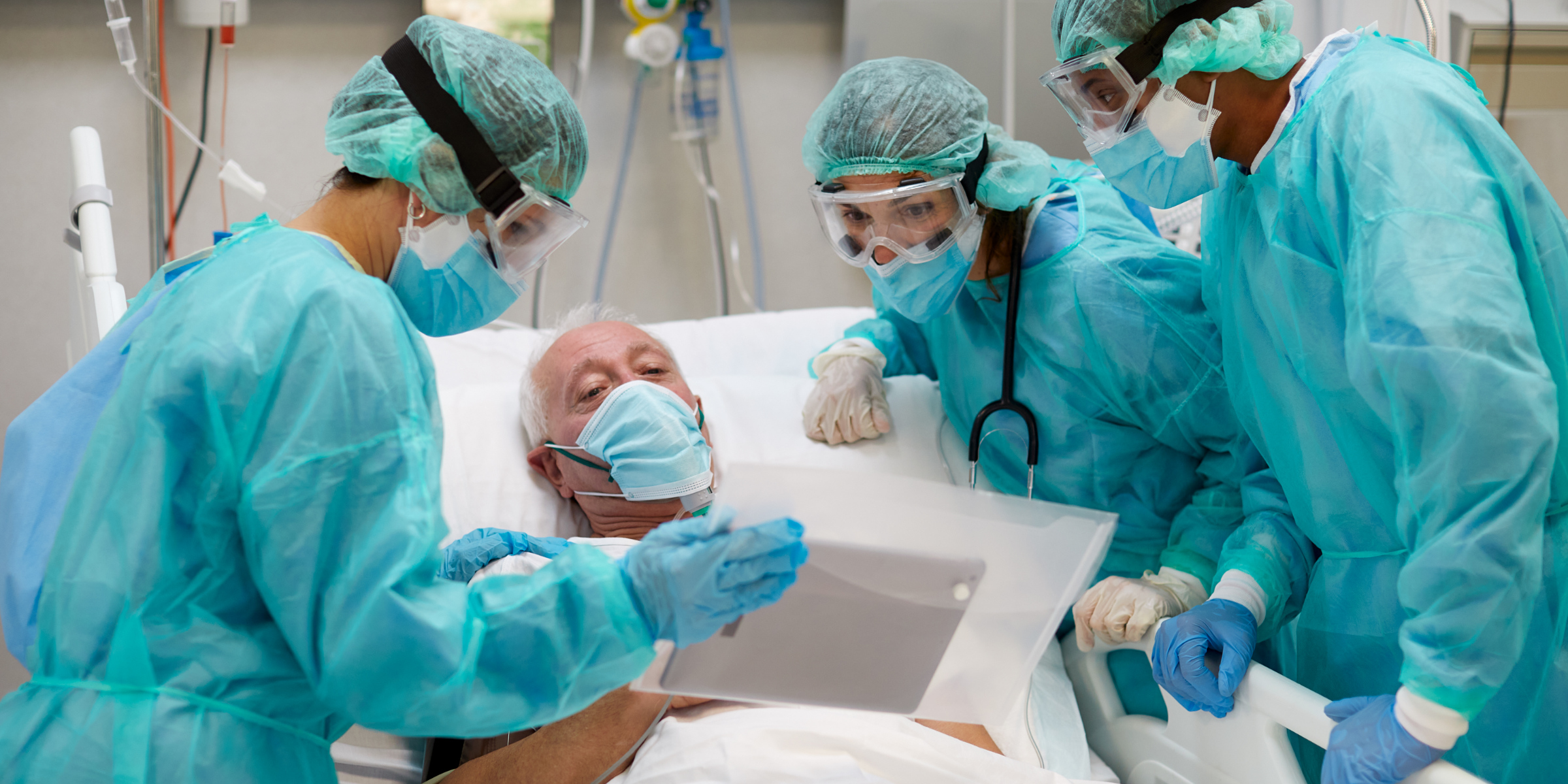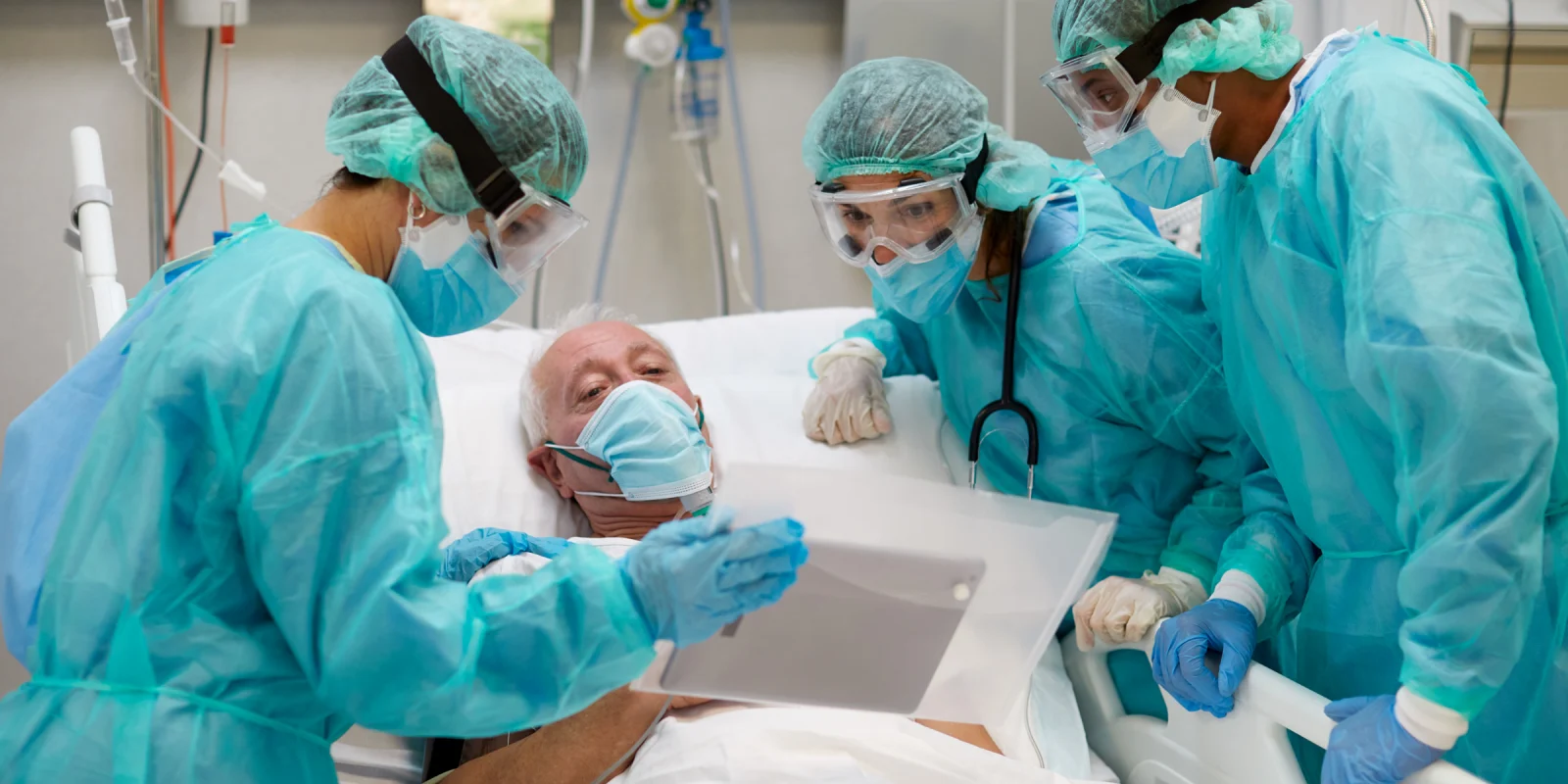
When hospitals started restricting visitors due to COVID-19, I knew it would be hard for families. As a physician, I didn’t know it would be hard for me, too.
The physical distance separating our patients from their loved ones creates inevitable loneliness within our hospitals. It is a loneliness that every physician encounters amidst this pandemic. It is a loneliness that I found while video chatting with my dying patient’s 5-year-old son as he cried out, “I love you, Papi. I wish you would get out of bed and hug me.”
Coming into that conversation, I already knew that the previously healthy 40-year-old male in Room 8 was a father of three. But now, as I stood in the room that he might die in, video chatting with his family from a cell phone wrapped in a plastic bag, I had no choice but to emotionally confront the pain behind this truth. While his children took turns begging him to come home to play with them, his wife cried in the background, trying to shield her tears. I cried too, first from a place of sympathy, but then my thoughts raced past this family’s tragedy and landed on a sudden and overwhelming sensation of loneliness.
With this realization of loneliness came guilt. In this man’s dying days, I felt selfish for perseverating on my own loneliness. What are my feelings compared to the unimaginable pain of his family? Why did our video chats create a feeling of separateness, rather than the communion I was seeking?
Over the coming days, I tried to bridge the distance between this patient and his family through our video chats. I do not know if I succeeded. Despite the family’s expressions of gratitude, it is hard to see past the stinging isolation that comes from these virtual meetings. These video chats promise to bring us together, but they serve as more powerful reminders of our mutual separation.
At the end of these calls, we each return to our shared loneliness. His wife is still at home, clinging to grainy glimpses of her dying husband. After I end the call and doff my equipment, I walk back to the workroom alone. The bond of solidarity between physicians and the families that we serve is interrupted by the solitary silence that stretches from their home to his deathbed.
In normal times, visits offered us a chance to meet families face-to-face, build rapport, and form relationships that informed treatments. They were where we built our therapeutic alliances — a partnership with our patients defined by a promise of beneficence and shared goal-making.
Now, amidst a pandemic, our only choice is to have these meetings virtually. Without a family’s physical presence, our alliances feel weaker than usual. The community that we gain in these relationships is broken, and I find myself mistakenly feeling alone in carrying the grief of my patients’ illnesses.
Families and physicians share a need to speak face-to-face. For families, there is natural and implicit trust built on the presence and body language of physicians, even if our faces are obscured with masks, caps, and face shields. For physicians, there is motivation and strength to be found in the faces of our patients’ loved ones. Despite our best intentions with video calls and virtual meetings, we are robbed of the ability to share space and strengthen these connections.
We must face the truth about our phone and video calls. They are cheap imitations of the in-person connection that patients, families, and physicians crave amidst the staggering number of lives that have been lost and permanently altered.
We cannot let technology numb us to the fact that our patients and their families suffer in artificial loneliness created by the pandemic. Even though we may feel worlds apart while speaking through video chats, we must acknowledge that we stand in solidarity with them. Together, we share the same loneliness. We must be open to our own feelings of isolation and recognize that we are not alone in feeling this way. Our shared loneliness is yet another casualty contained within the COVID-19 pandemic.
Click here to see more perspectives on COVID-19 from the Doximity network.
Click here for up-to-date news about COVID-19 on Doximity.







